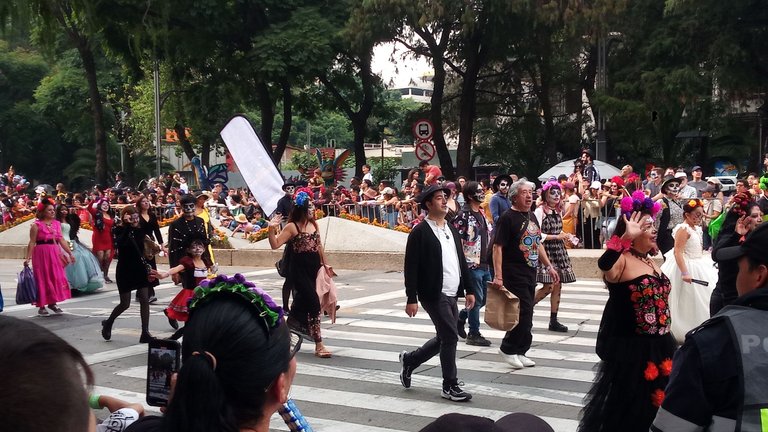When it comes to the Day of the Dead celebrations in Mexico, there are a number of things that come to people's minds: The colorful altars where each family commemorates their deceased relatives; the playful images of skeletons dancing, playing music, or riding bicycles, showing that death can be seen in light-hearted and joyful way. In recent years, however, many folks from abroad have been asking me about the famous day of the dead parade, to which I typically like to respond with a joke I once saw in a meme, kinda like this one:
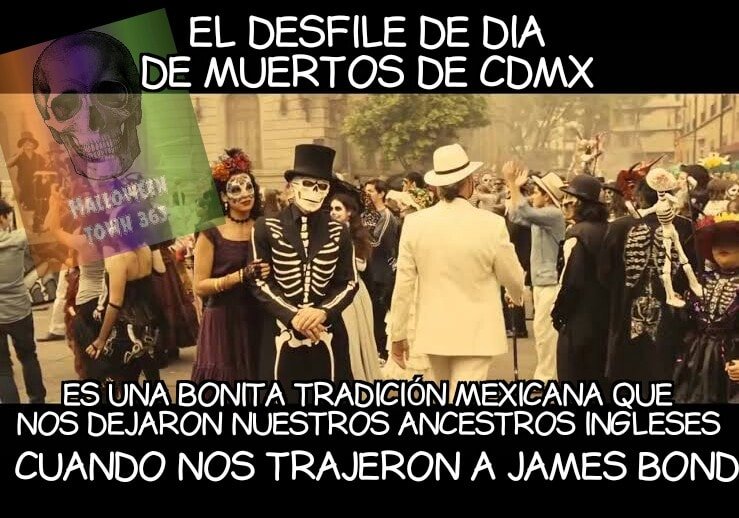
The Day of the Dead Parade in Mexico City is a beautiful Mexican tradition, left to us by our English ancestors when they brought us James Bond.

Oh, so is it really truly Mexican? At first I didn't think so, and I just shrugged it off as another one of those fads that seemed to be about celebrating a fictional English spy rather than anything Mexican. To be completely honest, I didn't even think this "tradition" would last for more than a couple of years. But I was wrong, and it seems like the Day of the Dead has gotten another activity associated with it, and Mexico City one more tourist attraction.
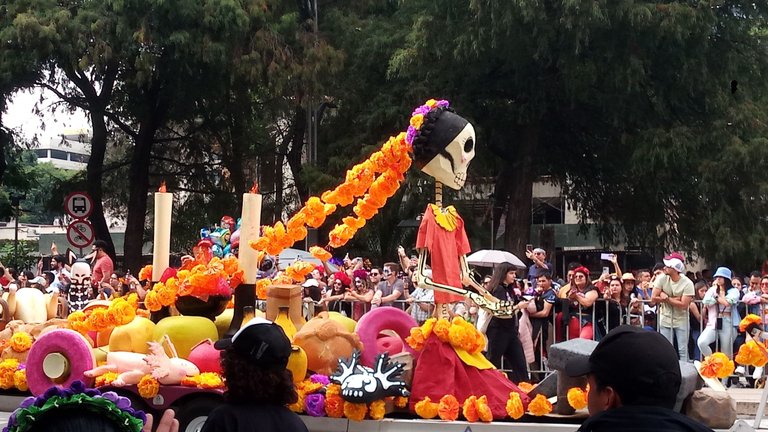
We Needed a Good Parade
Have there been other parades in Mexico City? Not that I could recall (though I would be surprised if this city didn't even have one decent parade!) So it's not surprising that the city and its residents decided to organize one, especially when they saw it portrayed in the 2015 James Bond film Spectre. Instead of complaining at the incorrect representation of one of their most iconic holidays, Mexicans decided that indeed, it was a great idea to have a parade on the Día de los Muertos. And sure enough, only one year after the James Bond movie came out, there was a day of the dead parade in Mexico City. It was not going to be the last one either.
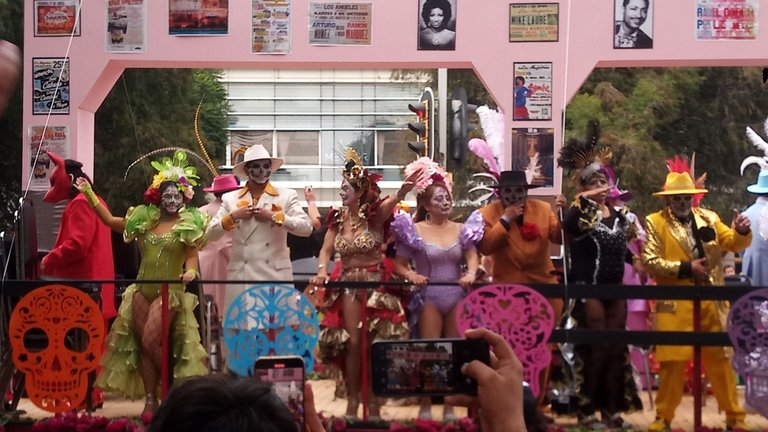
Eight Years Later, Totally on the Roll
If you think about it, it's almost surprising that Mexicans haven't organized such a parade earlier. After all, it offers the opportunity to present the myriads of cultural icons that Mexico can be proud of, ranging from animals that are held in high regard culturally, such as the axolotl or the monarch butterfly, all the way to the numerous feminist figures, such as Frida Kahlo or Sor Juana Inez de la Cruz. There were luchadores and voladores, mariachis and pachucos, campesinos and revolucionarios. The whole plethora of Mexicannes was touched upon one way or another. I totally should have gone to experience the parade sooner.
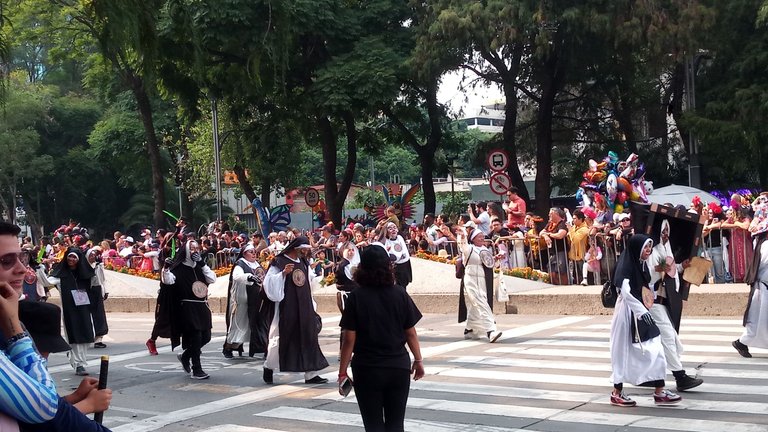
Showing Mexico to a Guest
But as we all know, in your own city you are less likely to go out of your way to see touristy sights. In my case this is especially true if it involves large crowds, which the parade certainly guarantees. So I never really felt the urge to see it, and I probably would have stayed at home this year too, if it hadn't been for a friend of mine from Germany, who came to visit and wanted to stock up on Mexican experiences during her short stay.
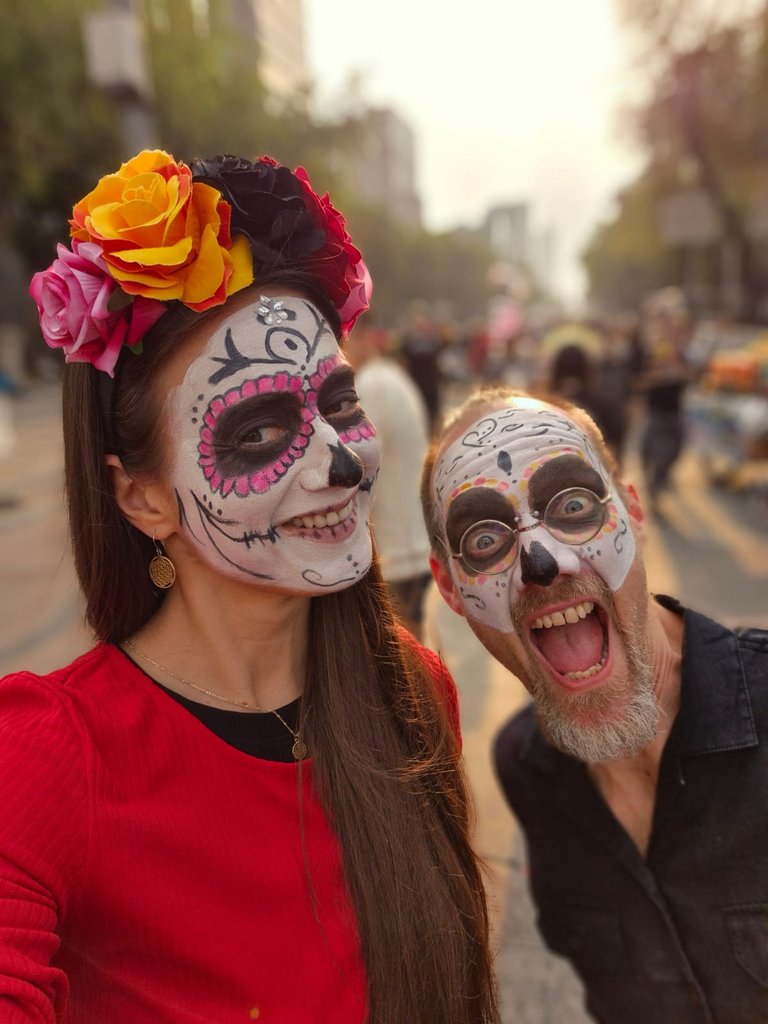
So we got our faces painted, as we saw so many people do in day of the dead themes, and went to the Paseo de la Reforma where the parade was going to pass by. Needless to say, there were so many spectators that it was hard to find a place where we could see anything. Even the exclusive spots up in the trees were all taken. With a little bit of persistence, however, we managed to score some spots once others had moved out of our way.
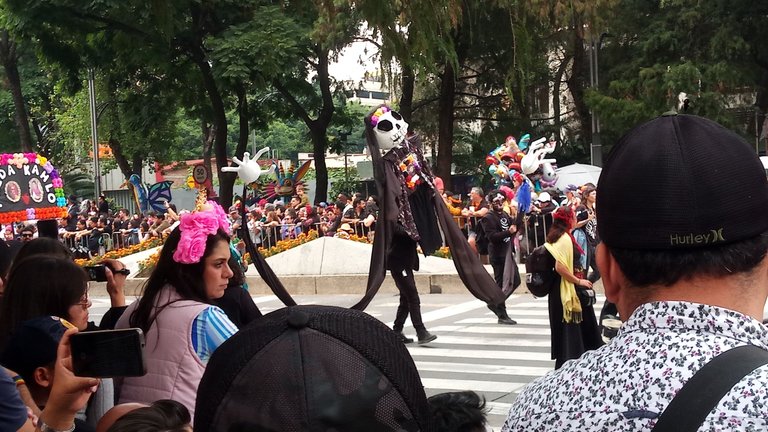
A Recommendable Experience After All
The parade lasted somewhere around 3-4 hours, and once it was over the crowd continued moving on along Reforma, so we followed along. This was just as interesting as watching the parade itself, since so many spectators were dressed up in costumes, or at least had their faces painted. In the end we were dispersed by the rain, which is highly unusual for this time of the year. All in all, the parade proved to be a worthwhile thing to attend, and I can recommend it to anyone visiting or even living in Mexico City. I may even go again next year.
